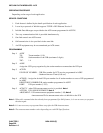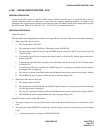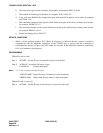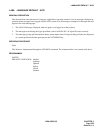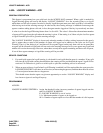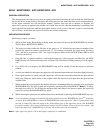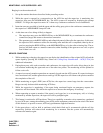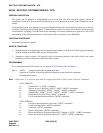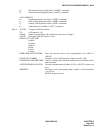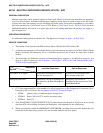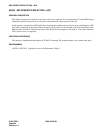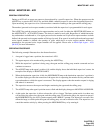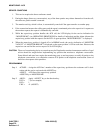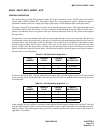
CHAPTER 5 NDA-24282 (E)
Page 264
Revision 1.0
MULTIPLE CUSTOMER GROUPS - ACD
M-29A MULTIPLE CUSTOMER GROUPS - ACD
GENERAL DESCRIPTION
The system can be arranged to independently service more than one ACD customer (tenant). Ideally all
components of the ACD system should be duplicated for each tenant but in reality some components can be
shared.
Using multiple tenants in an attempt to circumvent limitations imposed at a per-tenant level does not work since
too many components end up being shared. Tenant limitation exists for a reason often related to software design
considerations. Assigning a second tenant to take advantage of a tenant parameter may appear to work at first
but blending all the other components of a multi-tenant ACD can present several difficulties.
OPERATING PROCEDURE
No manual operation is required.
SERVICE CONDITIONS
1. Multiple tenants were designed to serve separate groups within one ACD system. Each group should have
separate telephone facilities, MIS systems and personnel.
2. Attempts to share resources will typically result in inaccurate statistics since calls which cross tenant
boundaries cannot be adequately tracked by either system.
PROGRAMMING
For consideration of the ACD tenant, see Assignment of ACD Tenant Data in Chapter 7.
Step 1: ASYD- Assign the tenant development table data.
Separate or Common Tenant Data table development for the respective commands.
0/1=Separate/Common
Note:
When data “1”is assigned, data must be assigned for Tenant 1 (TN=1) in the respective commands.
SYS1, INDEX92,
b
0
: System Data-2 (“ASYD” command)
b
1
: Special Access Code Data (“ASPA”,“AASP”,“AGSP” commands)
b
2
: Numbering Plan Data (“ANPD”, “AANP”, “AGNP’ commands)
b
3
: Station Data (“ASDT”, “AAST”, “AGST”, “ALDN”, “ASAT” commands)
b
4
: Route Restriction Class Data (“ARSC” command)
b
5
: Call Forwarding Restriction Data (“ACFR” command)
SYS1, INDEX93,
b
0
: Service Feature Restriction class Data (“ASFC” command)
b
1
: Call Forwarding Data (“ACFO” command)
b
2
: TAS Data (“ATAS” command)
b
3
: Speed Calling Data (“ASPD” command)
b
4
: Route and Selection Translation Data (OG, Tandem) (“ASTP”, “AFRS” commands)
b
5
: Route and Selection Translation Data (IC) (“ASTP”, “AFRS” commands)



